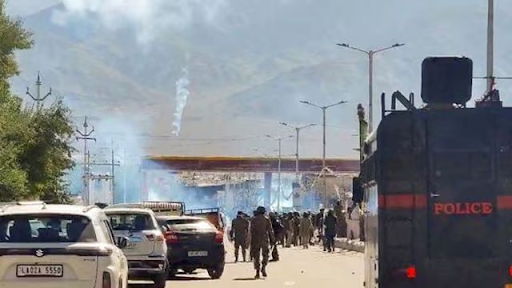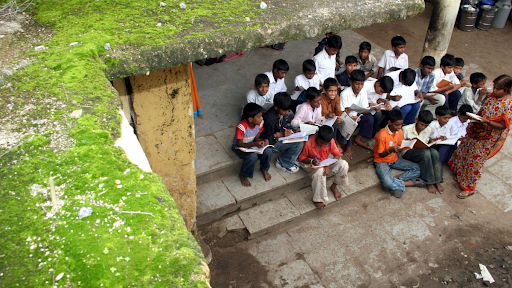Description

Copyright infringement not intended
Picture Courtesy: https://www.livemint.com/news/india/explained-how-will-centre-implement-one-nation-one-election-11726660849419.html
Context:
The Union Cabinet approved a proposal to hold simultaneous elections in India, following the recommendations of a high-level committee led by former President Ram Nath Kovind.
Details
- Simultaneous elections, also known as ‘One Nation, One Election,’ refer to polls conducted simultaneously for the Lok Sabha and State assemblies.
- The concept intends to streamline the voting process and reduce the several electoral cycles that India currently experiences.
Background
●Elections have been held simultaneously between 1951 and 1967.
●In its 170th report (1999), the Law Commission recommended one election to the Lok Sabha and all Legislative Assemblies in five years.
●Parliamentary Committee (2015) suggest methods for simultaneous elections in two phases.
●The High-Level Committee chaired by former President Ram Nath Kovind was constituted in September 2023.
|
Key Recommendations of the Kovind Committee
- The Committee recommended that simultaneous elections be held throughout the country.
-
- It observed that frequent elections create an atmosphere of uncertainty in administration and governance..
- Simultaneous elections will promote stability and predictability in governance by reducing disruption and policy paralysis. It will also decrease costs and increase voter engagement.
- It mentioned a research paper that found that simultaneous elections boost economic growth, cut inflation, raise investments, and improve the quality of government spending.
- The Committee suggested simultaneously holding elections into Two-Phase:
-
- Phase 1: Lok Sabha and State Assembly elections.
- Phase 2: Local body elections, held within 100 days of the first phase.
- The Committee recommended that all state assemblies and municipal bodies be dissolved as a one-time action, regardless of the remaining term, during the next Lok Sabha election. This will bring all elections into line.
- The Committee recommends defining "full term" for Lok Sabha and State Assemblies as five years.
-
- If the house is dissolved before the end of this term, the remaining period will be referred to as the "unexpired term".
- The Committee proposed calling a new election for the "unexpired term." The new term would equal the remainder of the five-year cycle for the simultaneous election.
- For Example, If a new election for a state legislature or Lok Sabha is held two years after the simultaneous polls, the term will be only three years. This will bring all elections together every five years.
Constitutional Amendment Required
- The Committee suggested 15 amendments to the Constitution through two bills:
-
- Bill 1: Focuses on transitioning to simultaneous elections and managing elections if either the Lok Sabha or State Assemblies are dissolved before their full term.
- Bill 2: Deals with municipal and panchayat elections and creates a Single Electoral Roll.
- The Committee noted that constitutional amendments affecting the periods of Parliament and state assemblies will not require state ratification.
-
- Constitutional amendments relating to local bodies must be passed and ratified by at least half of the states.
The Committee recommended introducing new provisions in the Constitution.
●Introduce Article 82A to set the groundwork for simultaneous elections.
- It will outline the transition process, including the end of Legislative Assemblies' terms in line with Lok Sabha elections.
- This will ensure that all elections follow the same schedule, eliminating the administrative and financial burden of frequent elections.
●Introduce amendments to Article 327 to expand Parliament's authority to conduct simultaneous elections, in addition to existing obligations such as electoral roll preparation and delimitation.
●Introduce Article 324A to give Parliament the authority to ensure local body elections (municipalities and panchayats) are coordinated with general elections.
|
Single Electoral Roll
- Currently, two constitutional authorities supervise elections:
-
- The Election Commission of India (ECI) is responsible for both Houses of Parliament, State Legislative Assemblies and Councils, the President, and the Vice-President.
- The State Election Commissions (SECs) are responsible for local elections; Panchayat and Municipalities.
- Some state rules allow SECs to produce their electoral rolls, while others require them to use the electoral roll prepared by ECI.
- The Committee suggested using a single electoral roll to decrease redundancy and duplication among many agencies. It proposed authorising ECI to produce the unified electoral roll in cooperation with SECs.
- A constitutional reform will be required to implement this unified electoral roll. The Committee noted that these revisions will also require ratification by at least half of the states.
Potential Advantages of One Nation, One Election
- Conducting all elections simultaneously lowers the overall cost as resources such as security, administrative assistance, and logistics are more efficiently utilised.
- Periodic elections might result in political instability and policy disturbances.
-
- Simultaneous elections create more stable governance by coordinating the terms of all elected authorities.
- It will promote a consistent policy environment and decrease the possibility of frequent policy changes.
- Voters can cast votes for all levels of government in one go, it will increase participation and avoid the inconvenience of several voting days.
- Elected officials have more time to focus on governance and policy implementation without the distraction of frequent elections.
- Fewer election cycles can minimise the possibility of election-related violence, resulting in a more peaceful electoral environment.
Challenges and Considerations
- Creating a uniform voter list for all elections, including merging state and central rolls, poses technological and administrative obstacles.
- Simultaneous elections may impact state political dynamics, potentially favouring national parties over regional ones.
- Amendments affecting state elections require thorough discussions with state governments that may oppose changes that harm their autonomy.
- Managing the logistics of simultaneous voting in various geographic areas, especially remote regions is difficult.
- Simultaneous elections need tremendous financial resources to organise and manage properly.
- Disagreements or irregularities in the simultaneous elections could result in complex legal fights, compromising the overall effectiveness of the process.
- Simultaneous elections may shift legislative focus to more national problems, ultimately ignoring local concerns essential to regional growth.
Way Forward
- Simultaneous elections require amending the Representation of the People Act, 1951, and several provisions of the Constitution to match the electoral cycles for the Lok Sabha and State Legislative Assemblies.
- The Election Commission of India (ECI) would be responsible for creating a unified electoral roll, ensuring that polling infrastructure is ready, and training staff to handle the complications of simultaneous elections.
- State and central administrative machinery must be equipped to meet the administrative burden of holding simultaneous elections.
- Public awareness initiatives that address concerns about the influence of simultaneous elections on local and national governance may help build support and understanding.
- Gaining public approval and trust in the simultaneous election method is critical to its success. The new system must be introduced and handled clearly and transparently.
Conclusion
Simultaneous elections need constitutional amendments, careful planning by the Election Commission, and significant public participation. Addressing concerns from diverse stakeholders and planning alternatives is critical for a successful execution. If properly handled, simultaneous elections can improve the electoral system's efficiency and lead to more stable governance in India.
Must Read Articles:
SIMULTANEOUS POLLS
COMMITTEE ON SIMULTANEOUS ELECTIONS
ONE NATION ONE ELECTION
Source:
Indian Express
PRS

|
PRACTICE QUESTION
Q.Critically analyse the challenges that India would face in transitioning from the current election system to a simultaneous election system. How will it impact governance at both the central and state levels? (250 Words)
|











